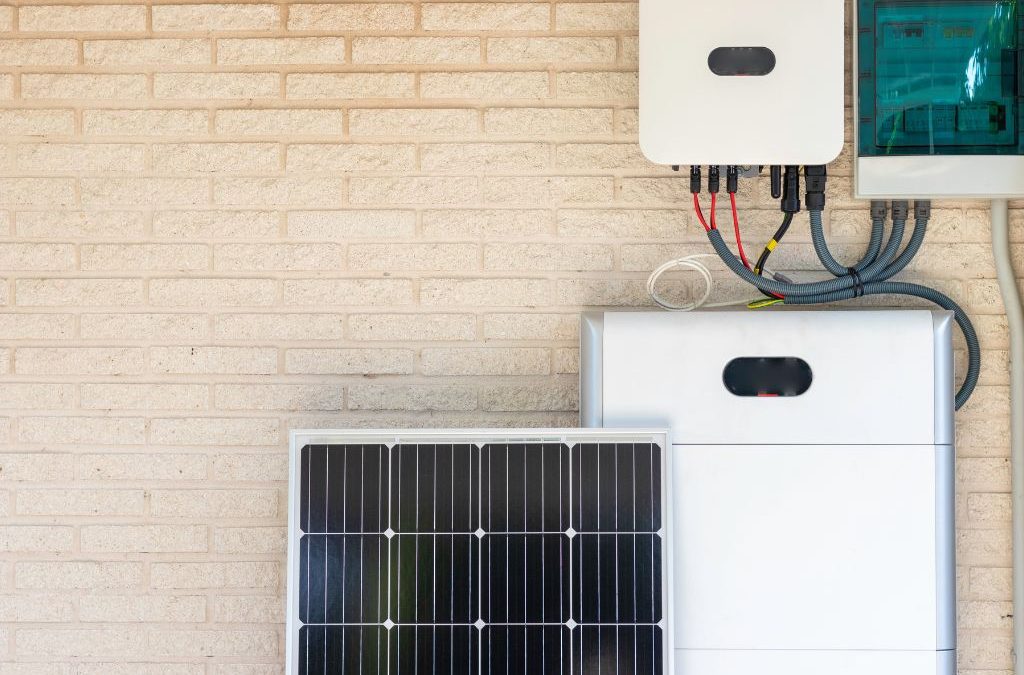Have you gone solar? You’ll never regret making this on-trend and transformative decision, as it not only represents a massive step towards a sustainable and ‘green’ lifestyle but will also drive down or slash your power bills just as they are soaring. But now that you’ve tapped into solar energy’s potential, considering solar battery storage is the logical step to take it to the next level. Integrating a solar battery in Brisbane allows you to store rather than waste excess solar energy you generate during the day – meaning you can enjoy continuous and reliable ‘free’ solar energy at night or when the grid goes down. But are you asking yourself: What size solar battery do I need?
What size solar battery do I need for my house?
They say that size doesn’t matter, but that’s definitely not true when it comes to solar battery size. Now, when discussing solar battery sizes, we’re not talking about its physical dimensions but its storage capacity and power output. Too big, and you’re only wasting money and even compromising solar power’s overall efficiency. And too small that you won’t be able to store enough solar power for your household’s needs, leaving you just about as reliant on the grid as you were in the first place.
Why a solar battery sizes chart isn’t enough?
Just planning to use one of those free online solar battery size calculator apps you’ve seen? While they may give you a decent idea to estimate your solar battery needs, they merely use generalised assumptions and standard formulas. And few of them factor in your specific consumption, the unique solar potential of your location, your daily usage fluctuations, and the efficiencies of different solar panel types.
Remember, a mismatch between the right solar battery sizes for you and the actual product you purchase takes away from the efficiency and cost-effectiveness of your solar setup. The solution?
Try our detailed guide to correct solar battery sizes
Try our exclusive and thorough step-by-step approach to helping you answer the question: What size solar battery do I need?
1. Check your daily energy usage
First, we’ll need to figure out how much your household is using energy every day – on average. Helpfully, you should find the figure in kilowatt-hours (kWh) on your power bill, but also pay close attention to identifying patterns and peak usage periods.
2. Assess your solar panel output
Now, we’ll need to figure out how much of that daily usage is already taken care of by your solar panel setup’s average daily energy output. And the answer doesn’t just depend on the panels, but also on where you are and the amount of sunlight they are exposed to at different times throughout the year.
3. Evaluate peak demand times
Observe that at certain times – let’s say evenings when everyone’s home – your household energy demand tends to peak. It’s therefore critical to not just have a basic capacity overview, but whether your solar battery is capable of meeting peak rather than overall energy demand – especially in non-sunshine periods.
4. Calculate battery capacity needs
With your consumption and output data, you’ll now need to estimate the required storage capacity of your battery – usually in kWh. This step means:
- Breaking down usage over different times of the day
- Subtracting consumed solar energy from total consumption
- Factoring in days of low solar production (ie. the need for surplus energy)
- Bearing in mind inverter energy losses
- Estimating future power usage changes
- Striking a balance between excess capacity & inefficiency.
5. Don’t forget about depth of discharge (DoD)
Once you calculate solar battery size roughly, don’t forget about the DoD – the concept that these batteries vary in terms of how thoroughly they can be depleted of energy. So once you hone in on a product, see how high or low the DoD factor is.
6. Don’t overlook battery quality
One of the differences between high-quality solar batteries and lower-quality ones is how much heat they lose during charging and discharging. Sometimes, a cheap solar battery may seem to have enough usable energy – and then you find that it’s pretty inefficient.
7. Is your solar panel going to work?
You can get a very good idea of solar battery capacity, only to discover that it’s not compatible with your existing solar system – or compliant with local rules.
Are you getting a good idea of what size battery you need for your house? If you thought our step-by-step process was straightforward, don’t forget that each step involves complex calculations and personalised considerations – and even more layers of data analysis and a deep understanding of solar energy systems.
Ask our experts about solar battery size
So while getting a very good idea about the required battery size is beneficial, you’ll need a solar electrician to make your calculations personalised and perfect. Remember, solar power is a major and long-term investment – so why not ask the friendly solar specialists at Solar Repair Service for help?
We offer personalised consultations, detailed energy assessments and tailor-made solutions to ensure your solar battery is perfectly sized for your needs and is always in tip-top shape. By using Solar Repair Service, you’re gaining a partner dedicated to maximising your solar investment – so get in touch today.







